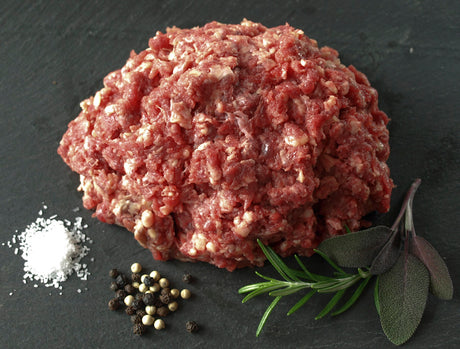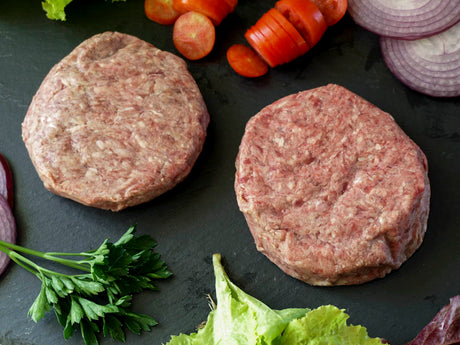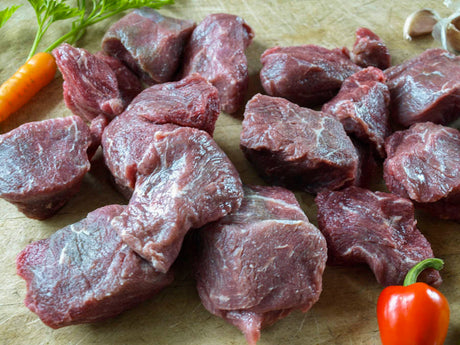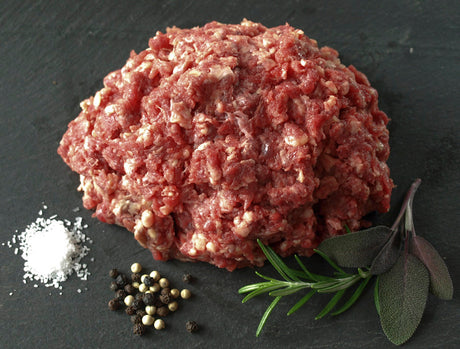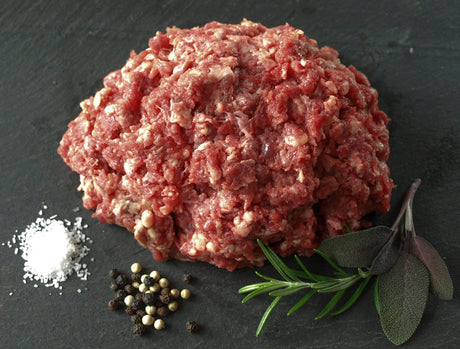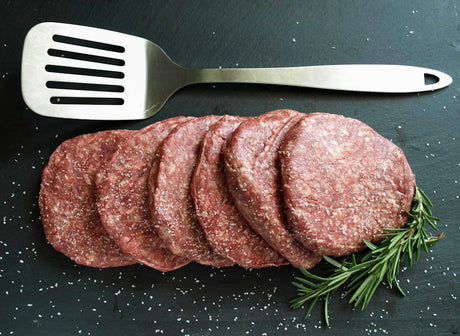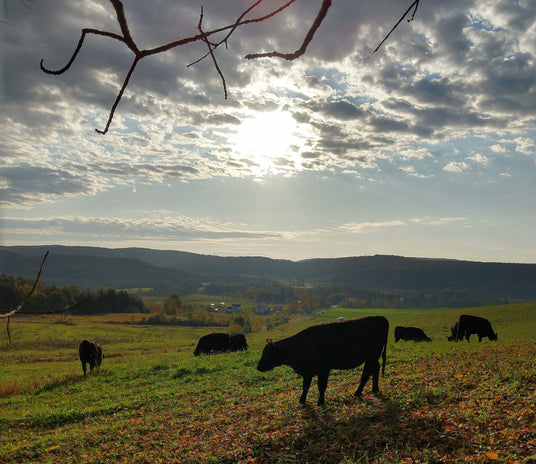
The Joy of Grazing Cows
Just about my favorite thing is watching cows graze a piece of fresh pasture on a mild spring morning. When I’m setting up their paddock for the day they all line up along the fence to watch me. If they’re feeling impatient they might moo a little, but usually they follow me with their eyes, and, if I move too far down, with their bodies - no one wants to be last to the buffet. When I do let them in they stream through, drop their heads, and start eating.
Few things look so content as cows filling their bellies. There’s a striking perfection to the relationship between vibrant green of the pasture and the animals it feeds, especially when I look back at the paddock the cows just left. It will be flattened except for occasional ragged tufts. In fact, if the cows have been on it the right amount of time that section will look downright rough. But looking back further, at the area the cows were a week ago the pasture is exploding with life.
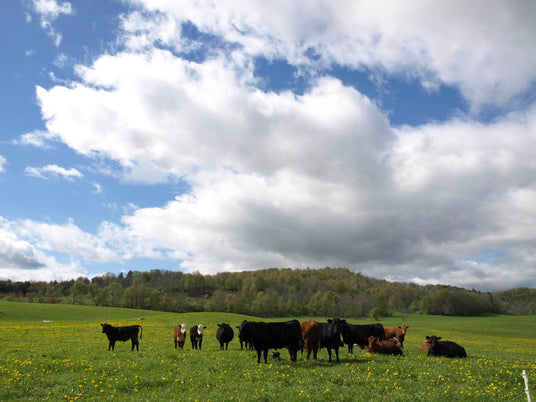
Happy Cows, Better Beef
There’s an unfortunate ignorance when it comes to meat. Much of our modern food system is set up to hide the grim reality of factory farms and industrial slaughterhouses - maybe most of us like eating meat, but we don’t want to know where it comes from. But this state of affairs is exactly backwards. I want you to know how and where the beef you eat was produced, and why it is healthier in the broadest sense of the word.
When it comes to grass fed beef there are a lot of health claims. Yes, grass fed beef is higher in omega 3 fatty acids than corn fed beef. Yes, it also has higher concentrations of particular nutrients. But I think focusing too much on narrow claims just because they have some studies to back them up misses the bigger picture. Grass fed beef, when it comes from a responsible farm, is healthier not just for people, but for the entire ecosystem.
Another bonus is that beef from cattle that have lived a good life with sunshine and exercise also tastes better than conventional beef.
100% Grass fed, Grass Finished Beef
View all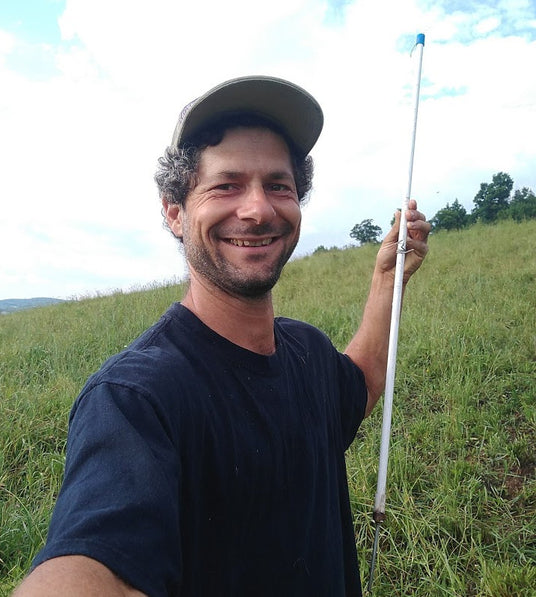
Cows and Grass, a Virtuous Cycle
What cows do better than just about anything is eat grass. This may not seem so special, but think about it - of all the animals out there, very few choose to spend their time grazing. Most have decided seeds or leaf buds or insects or other animals make for a better meal. But there are exceptions, such as horses, deer, buffalo, geese, and cows, all of which are happiest in the middle of a fast growing field. Good grass is plenty nutritious, but all that protein and energy is locked up in a matrix of tough fiber called lignin. What makes cows special is that they are able to digest lignin, letting them thrive on nothing but pasture.
And grass wants to be eaten. When I first moved to Cairncrest farm the fields were mostly goldenrod and burdock, with hardly a blade of timothy or leaf of clover to be seen. Since then these fields have transformed from tough and weedy to lush and verdant, entirely at the mouths and hooves of cows. Grasses and a few other species like clover and plantain are particularly tolerant of intense impact. They can be grazed and trampled and bounce back more vigorously than before.
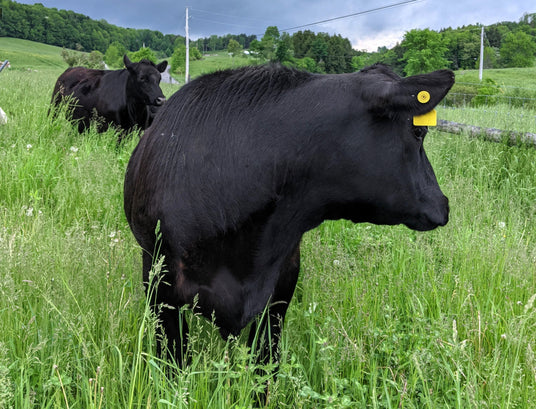
Management Makes the Difference
But the trick is proper management. A field left by itself in central New York will soon become dominated by goldenrod, milkweed and thistle. Over the years bushes and trees will establish, and the field will become woods. Indeed, much of the forest around my farm used to be in grass. By grazing and trampling, cows can maintain and improve pasture. However, it's not just a matter of putting the herd into a field and letting them roam around. There are two critical components, stocking density and rest.
Stocking density is easy to understand. If there are too many cows for an area of pasture to support they'll graze down to the dirt, and as a result nothing will grow. But if there are too few cows they will only eat some of the plants, letting the other grow out of control. The right number of cows impacts all the plants in an area, and the species that are best able to tolerate that impact - mainly grasses and clovers - grow back most vigorously.
But that requires time, which is where rest comes in. No plants, not even the most vigorous fescue, can stand up to continuous, heavy grazing. Instead, they need time to regrow after being grazed. Luckily, portable fencing makes it possible to precisely calibrate the time the herd of cows spends on any particular piece of pasture.
The result of all this work is healthier cows and tastier beef, beef you can feel good about eating.








